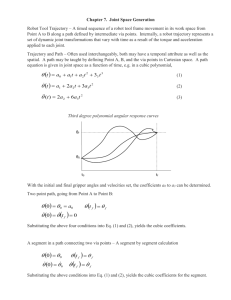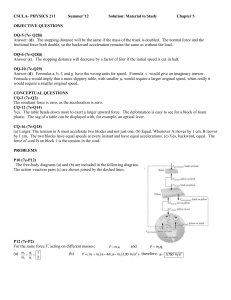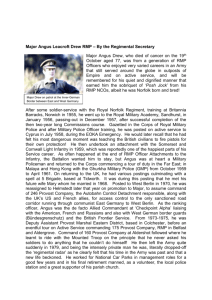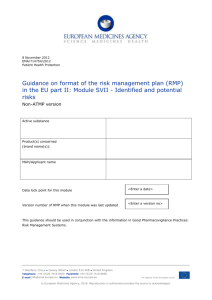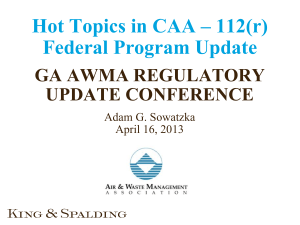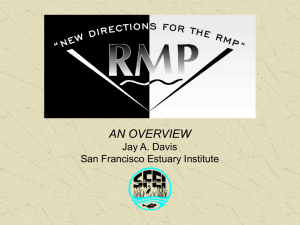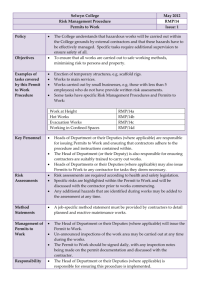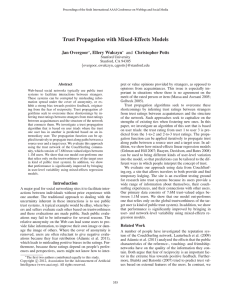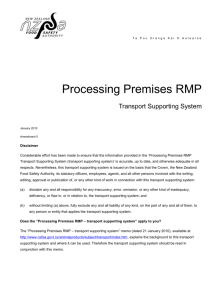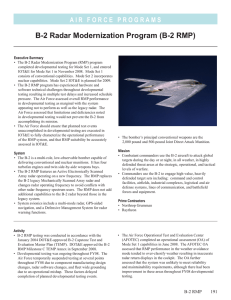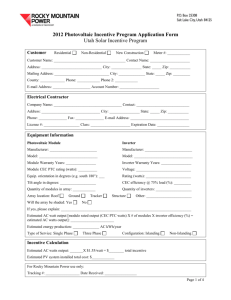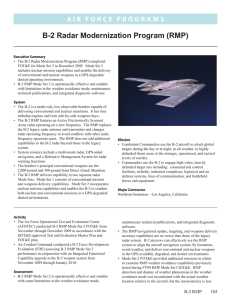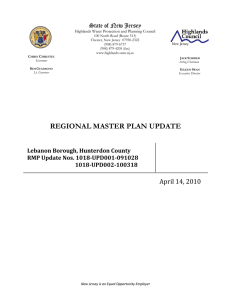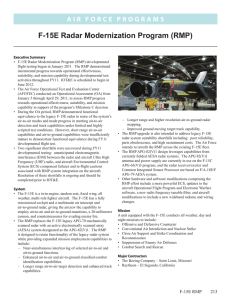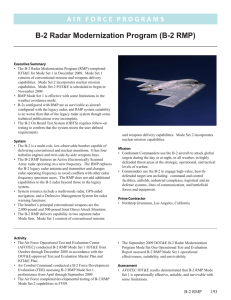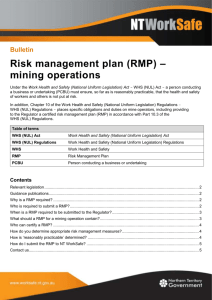Chapter 7 Trajectory Generation
advertisement
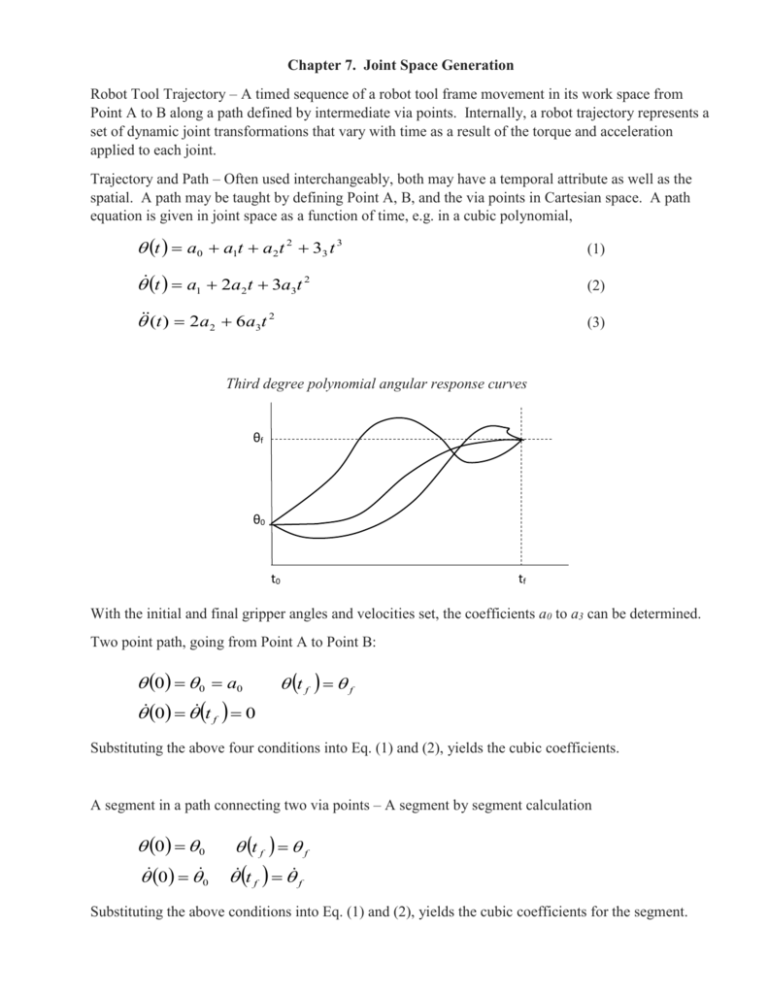
Chapter 7. Joint Space Generation Robot Tool Trajectory – A timed sequence of a robot tool frame movement in its work space from Point A to B along a path defined by intermediate via points. Internally, a robot trajectory represents a set of dynamic joint transformations that vary with time as a result of the torque and acceleration applied to each joint. Trajectory and Path – Often used interchangeably, both may have a temporal attribute as well as the spatial. A path may be taught by defining Point A, B, and the via points in Cartesian space. A path equation is given in joint space as a function of time, e.g. in a cubic polynomial, t a0 a1t a2 t 2 33 t 3 (1) t a1 2a2 t 3a3t 2 (2) (t ) 2a2 6a3t 2 (3) Third degree polynomial angular response curves θf θ0 t0 tf With the initial and final gripper angles and velocities set, the coefficients a0 to a3 can be determined. Two point path, going from Point A to Point B: 0 0 a0 0 t f 0 t f f Substituting the above four conditions into Eq. (1) and (2), yields the cubic coefficients. A segment in a path connecting two via points – A segment by segment calculation 0 0 0 0 t f f t f f Substituting the above conditions into Eq. (1) and (2), yields the cubic coefficients for the segment. Angular Position Velocity Angular Position Velocity Acceleration Acceleration 0 0 0 Interpolation - Movement between via points. Linear (straight line) or Polynomial (curved). All robot joints, including the prismatic joints, are motor driven. Therefore, intuitively a linear motion with a high degree of accuracy is more difficult to achieve than a non-linear motion. The robot arm normally pass near, not through, the via points to avoid jerky motion unless instructed to do so. If no via points are specified, the robot will take a smooth “PTP” path. θ t2, θ2 θ4 t12 , 12 θ3 t1, θ1 T12 t Linear Path with Parabolic Blends Design attributes – Segment duration (linear and blend), velocity of the linear segment, acceleration of the blend, For interior points 23 ( 3 2 ) / T23 t 3 (34 23 ) / 3 t 23 T23 1 1 t 2 t3 2 2 where T23=t2+t23+t3 For end points 1t1 ( 2 1 ) /(T12 1 t1 ) 2 Solving for t1. t1 T12 T12 2( 2 1 ) / 1 2 12 ( 2 1 ) /(T12 t12 T12 t1 1 t1 ) 2 1 t2 2 θ t Linear Path with Parabolic Blends over Pseudo via points for through points Linear Positioning System Control Resolution Distance between two adjacent addressable points. Set by desired control needs and constrained by mechanical limits. Addressable Points Set by the step angle, the gear/pulley ratio, and the lead screw pitch. Accuracy (Maximum error) ½ of Control Resolution + 3σ (Standard Deviation of positional variability) Repeatability (Precision) ±3σ Control Resolution Accuracy Max. error Precision ±3σ Work Table TaTable Servo Motor Reduction Lead Screw Recirculating Ball Gear Bearing Nut Pulse Output Encoder Pitch Stepper Motor Lead Screw Nut assemblies Encoder Disk Pulse (Baud) Rate = Motor RPM x 360 / Step Angle
